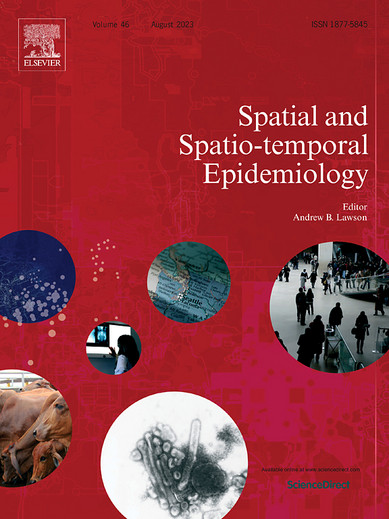Main Content
Pandemic Waves in Time, but not in Space
Paper on the Spread of COVID-19

An article by IRS researchers Andreas Kuebart and Martin Stabler recently published in the journal "Spatial and Spatio-temporal Epidemiology" looks at the severity of the COVID-19 pandemic at the level of German counties over time. The study shows: The first four waves of the pandemic were distributed very unevenly within Germany. However, even over long periods of time, the distribution remained surprisingly stable and the affected regions remained the same.
While common models have expected the COVID-19 pandemic to "wander" in space, Kuebart and Stabler's results show that the hotspots and coldspots of the first four waves were relatively stationary in space. These findings suggest that local conditions strongly influenced the severity of the pandemic. This underscores the importance of studying pandemic waves regionally to gain a more comprehensive understanding of their dynamics.
The article presents a novel approach to analysing the spatio-temporal dynamics of the COVID-19 pandemic in Germany. It analyses the spread pattern of COVID-19 during fifteen clearly delineated temporal phases of the pandemic. To counteract problems in the comparability of incidence values over the two years of the study period, during which the testing strategy had changed several times, a composite indicator was used. This composite indicator includes the incidence of deaths and the incidence of intensive care patients in addition to the COVID-19 incidence. In the course of the geostatistical analysis, similar "trajectories" of pandemic severity across the fifteen phases could be identified among all German counties.
The paper is a product of the DFG-funded project "CODIFF", which investigated the spatial spread patterns of the COVID-19 pandemic in Germany. The project, which will be completed in early 2023, exploited the potential of temporal-spatial analysis methods to understand pandemic outbreaks.
Another article from the project appeared as a pre-print version on the Medarxiv server earlier this year and goes into more detail about the temporal breakdown of the first two pandemic years, 2020 and 2021. Here, a phase model of the pandemic is developed and each of the fifteen phases is analysed individually in terms of space and content. In addition to the spread patterns of pandemic severity, the focus is also on other indicators of the spread dynamics, such as the respective role of imported cases and local outbreaks, as well as the spread of new virus variants. The corresponding dataset was published on the Zenodo server.

